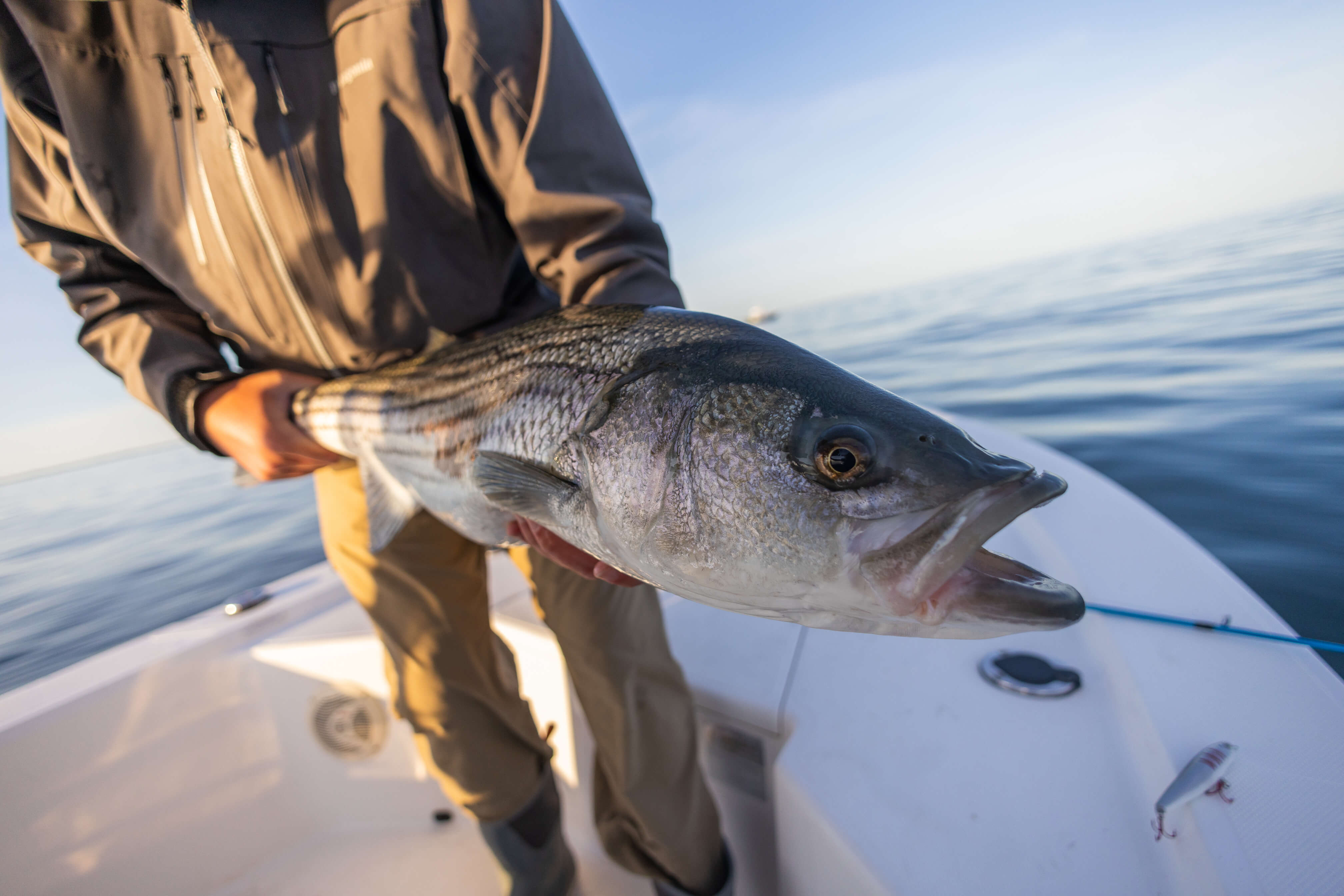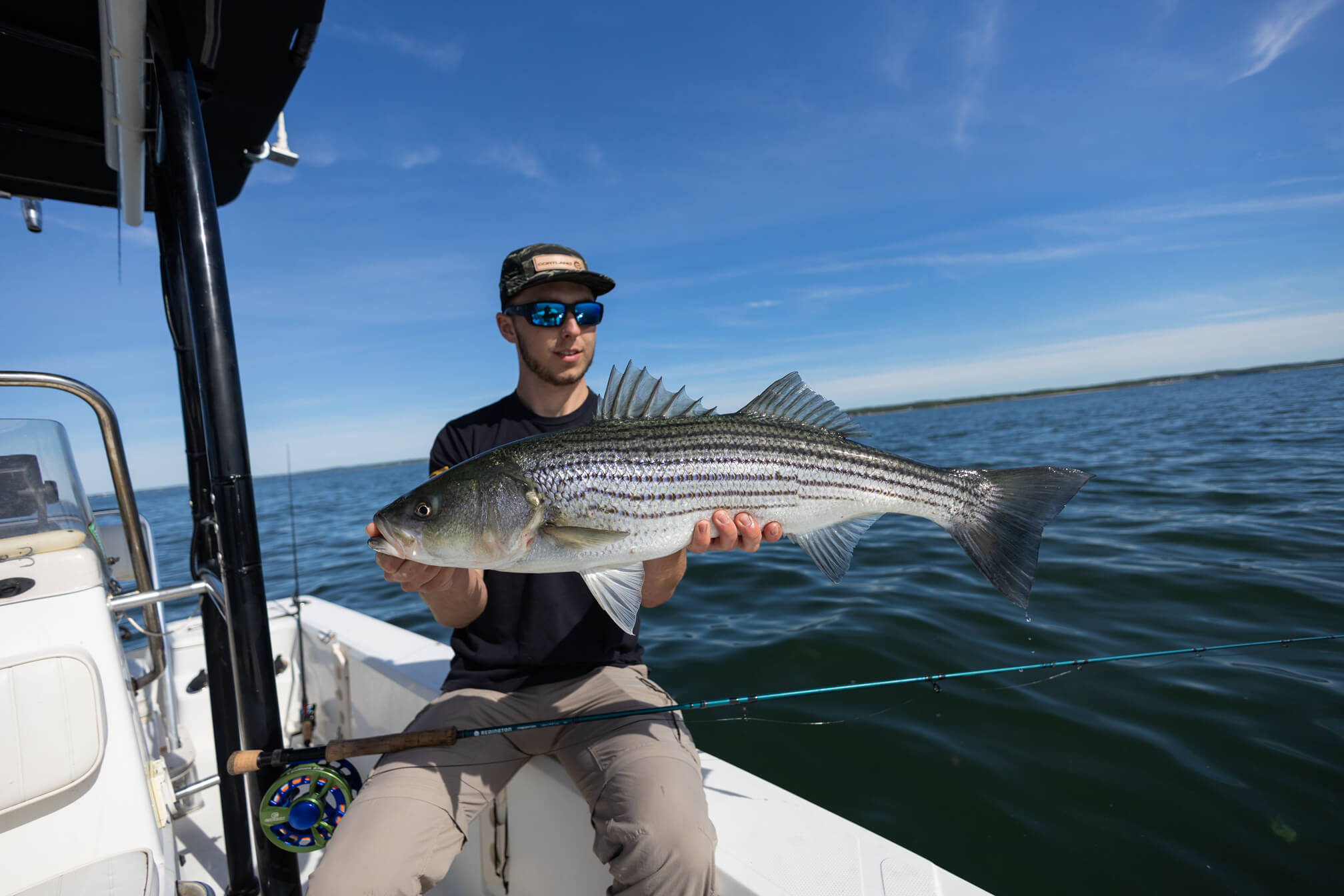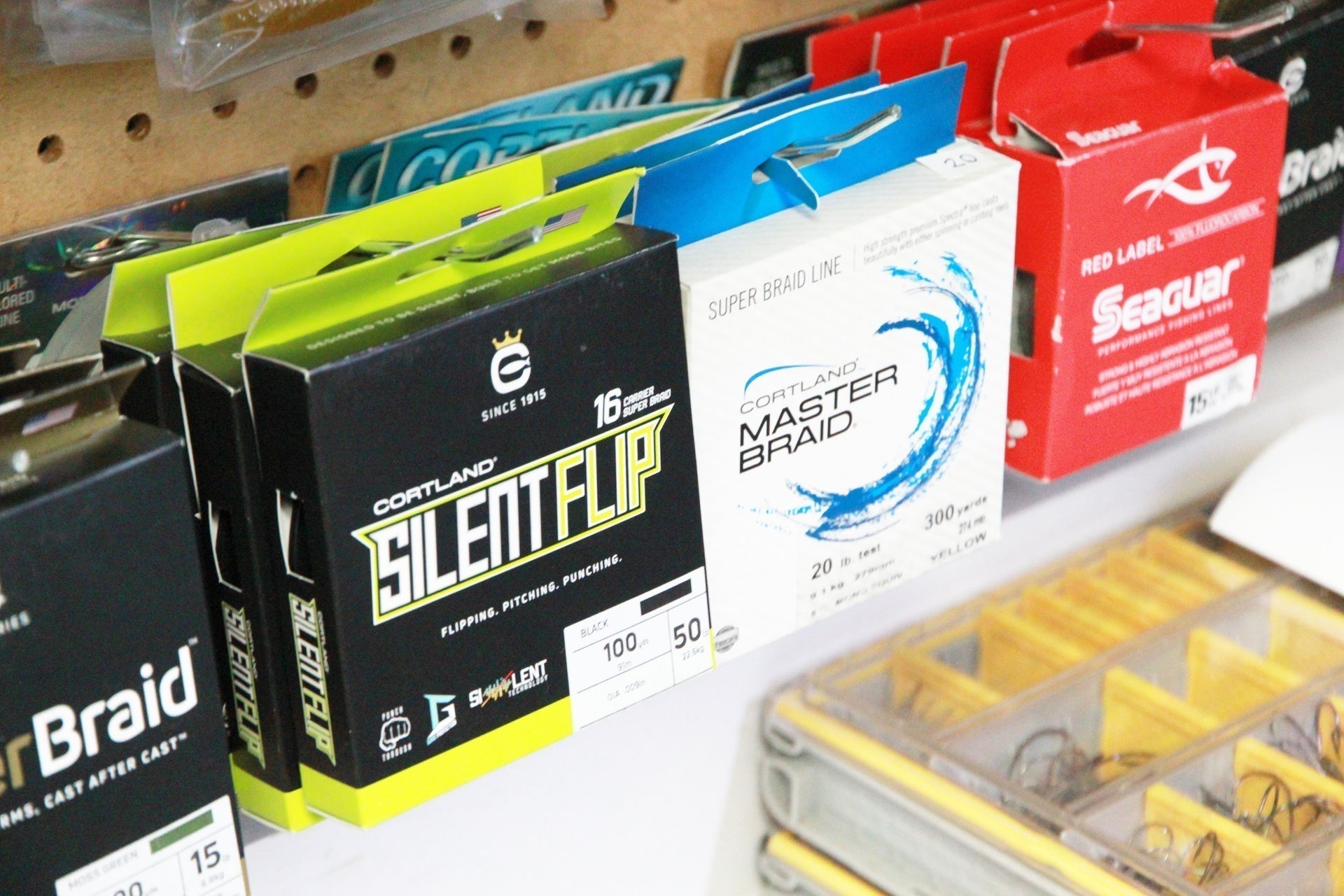Article Written by Matthew Borovy. Learn More About the author below / Article Read Time: 6 Minutes
Striped Bass are one of the most sought-after species in the Mid-North Atlantic Ocean due to their size, aggressiveness and pure power. These factors make them an incredible fish to target on both fly and light tackle. Over the last couple of years, they have quickly made the top of my list of favorite species to pursue. There are numerous places and tactics to catch striped bass as they are widely available throughout the Northeast and can be targeted from shore as well as inshore from a boat. Although, Striped Bass have previously been overfished and mismanaged in years past, 2022 saw a breakthrough with the draft proposal of amendment 7 to the Atlantic Striped Bass Interstate Fishery Management Plan. The passing of amendment 7 gives the future of this species some positive reinforcement and will mainly address restoring healthy stock levels of spawning fish and limiting fish mortality by recreational anglers.

Long Island Sound Overview
Throughout the summer, I have been fortunate enough to pursue Striped Bass in Long Island Sound and have had some successful outings. Being a Connecticut native, I am lucky to be able to travel back to CT a few times a year and hit the salt with friends that live near the shore of the Sound. Targeting Striped Bass in this area during the summer is unique because the fish that have been holding over during the winter in the multiple rivers in this area, return to the sound and merge together with the migratory fish coming from Chesapeake Bay, Delaware Bay, and Raritan Bay working up the coastline. The fish that holdover in the many rivers within Long Island Sound during the winter are typically schoolies but there are some nice 30” + fish that holdover as well. Since these two groups of fish converge in the sound, it can make for some very exciting days on the water.

Locating Striped Bass
When targeting Striped Bass, areas of focus include boulder fields, mouths of rivers, flats and deeper water. These are key habitats that will hold fish the majority of time although, the real driving force behind most of the bass’ motives are baitfish migrations. Trying to track baitfish can be extremely difficult and sometimes, it’s just a matter of finding a flock of birds working an area and hoping that bait is being pushed to the surface from a school of bass below. We ran into this scenario a few times this summer, before the fish were super abundant and still required a bit more effort of locating. After checking a few known holding spots without many signs of life, we had to venture out into the sound looking for any fish activity. After traveling a couple miles, we were able to spot a large flock of birds working bait off the surface. Upon getting closer, we could see boils below them, and there were blitzing bass present. If you have never seen or heard a school of Striped Bass blitzing on a pod of bait it looks like boiling water with continuous loud popping noises. Seeing a blitz can make people lose their mind so keeping your cool and approaching the blitzing pod with a plan can really pay off. You don't want to gun it into the middle of the blitz and have the fish disperse on you or head down in the water column. Usually when active blitzes are going on, the pod of bait and school of stripers are moving. You want to try and gauge the direction they are headed and position the boat so that you can cast to them as they approach the boat. If the pod is large enough, you don’t have to worry so much about the direction they are headed but rather getting positioned on the edge of the blitz without disrupting the feed.

Striper Blitzes on Fly
When Stripers are blitzing on bait at the surface, I like to approach them with an Intermediate Fly Line paired with an 8-10 wt. rod and a lightly weighted or weightless fly like a deceiver. The intermediate fly line will pull your fly down just enough, so it is right below the surface, within the strike zone of the fish. The fish pictured above was caught in the middle of a blitz on our Striped Bass Intermediate Fly Line with a chartreuse/white deceiver. Upon casting into the blitz, I like to give a slight hesitation before starting my retrieve. This allows for your fly to get down a little bit and then I will start with a couple short, sharp strips followed by a long pull and pause. I find that Stripers really like to eat on the pause in certain scenarios like this, especially after a nice long strip. There is no “right way” to retrieve so mixing it up is always smart.

Inshore Conventional Set Ups
My favorite way to target blitzing stripers with a spin rod is topwater. Depending on the size of the bait they are feeding on, there are different sizes and styles of topwater lures you should use. On this particular day, the Striped Bass were on some smaller sized bait, most likely peanut bunker or silversides. To mimic this smaller bait, I like to use a smaller walk the dog style lure like the Tactical Anglers Crossover Stalker and it was getting blown up pretty much every cast for as long as the blitz lasted. This healthy 32” schoolie pictured above was landed on that lure in the Silver Bullet color. Although, Stripers can be caught on bigger stuff when they are on smaller bait, it is always a good idea to try and match the size of whatever they are eating. This becomes particularly important when they get on rain bait in the early fall, and it becomes near impossible to get them on anything that is oversized. When they are on larger bait like adult bunker, it is hard to beat a lure like a Doc and it entices some of the most ferocious eats you will see out of these fish. To throw average sized top water lures, I use a 7’6” Medium Heavy Inshore rod with 20-30 lb. Blue Master Braid and a 20-25 Lb. Fluorocarbon leader. To throw large lures like the doc, you’re going to want to throw a Mag Heavy rod with 30-40 lb. Master Braid that can handle the weight of casting large lures as well as the weight of the big fish that come with throwing these types of lures.

Although, Striper Blitzes are extremely exciting and arguably one of the best ways to catch these fish, they do not always last long or happen at all. Most of the blitzes we encountered this year were first thing in the morning, right at sunrise and only lasted between a half hour to one hour long. Once the blitz is over, it doesn’t mean the fish are necessarily gone but the bait may have become dispersed and harder to pinpoint. This a good time to blind cast flies on a sinking line and can lead to a couple extra fish like the one below, which was caught in 80 feet of water, probably fishing around 20 feet deep on our Striped Bass Sink 8 fly line.

Striped Bass are one of the greatest species to catch in the North Atlantic Ocean and especially in Long Island Sound. I urge everyone to get out and experience these resilient fish at some point in their life. As I mentioned before, I’m fortunate enough to have the privilege of targeting striped bass from a boat, but striped bass can easily be targeted from shore as well and I have had many successful outings blind casting from shore. In many ways, fishing from shore can be better than angling from a boat as bait can stay in the “wash”. Getting inside the wave breaks with a boat to target them is impossible in this scenario making shore angling the only option. Long Island Sound is just one example of where you can target Striped Bass in the Northeast. These fish range from Southern Maine, Cape Cod, Rhode Island, Montauk down to the New Jersey coastline throughout the summer. Contact your local tackle shops if you plan to head out and try to find out when the best time to target Striped Bass in your area is. As always remember to properly handle these fish and we strongly encourage Catch and Release practices so we can enjoy these fish for many more decades to come.

About the author
Matt Borovy is a Cortland Line Sales Rep. and fly fishing guide in Central New York. A Connecticut native, he began freshwater fly fishing at the age of 13 and eventually made the transition into targeting large wild brown trout across the northeast as well as saltwater fly fishing for Striped Bass and False Albacore. He now resides in Syracuse, NY and spends most of his time targeting the many rivers, creeks and lakes in the area. To find out more about Matt or to book a guided trip in Central New York, visit: www.saltcityflyfishing.com or check out his Instagram: @saltcityflyfishing
Products mentioned in this article:
Striped Bass Intermediate Fly Line
Striped Bass Sink 8 Fly Line
Fluorocarbon Leader Material
Master Braid


